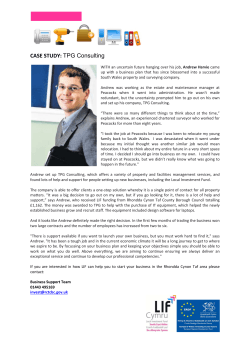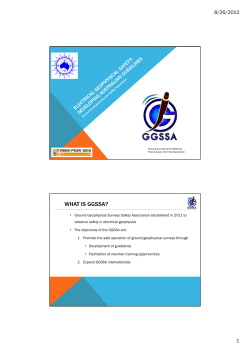
Design and Analysis of Sample Surveys
Design and Analysis of Sample Surveys Andrew Gelman Department of Statistics and Department of Political Science Columbia University Class 14a: Network sampling Andrew Gelman Design and Analysis of Sample Surveys Ronald Reagan was a statistician Andrew Gelman Design and Analysis of Sample Surveys “But the simplest way for each of you to judge recovery lies in the plain facts of your own individual situation. Are you better off than you were last year?” Andrew Gelman Design and Analysis of Sample Surveys Who do you know? I How many people do you know named Nicole? I How many people do you know named Anthony? I How many lawyers do you know? I How many people do you know who were robbed in the past year? Andrew Gelman Design and Analysis of Sample Surveys Scale-up method I On average, you knew 0.6 Nicoles I 0.13% of Americans are named Nicole I Assume 0.13% of your acquaintances are Nicoles I Estimate: on average, you know 0.6/0.0013 = 450 people I On average, you know 0.8 Anthonys I 0.31% of Americans are named Anthony I Estimate: on average, you know 1.6/0.0031 = 260 people I Why do these differ? Andrew Gelman Design and Analysis of Sample Surveys Question wording for “How many X’s” surveys Andrew Gelman Design and Analysis of Sample Surveys Perception vs. reality: names Andrew Gelman Design and Analysis of Sample Surveys Perception vs. reality: groups Andrew Gelman Design and Analysis of Sample Surveys Social structure! How many Jacquelines do you know? How many men in prison do you know? ● ● ● ● 0 5 10 or more Andrew Gelman 0 5 Design and Analysis of Sample Surveys 10 or more The gay penumbra 0 1 2-5 6-10 4.0 3.5 3.0 2.5 2.0 10+ 0 1 2-5 6-10 10+ Marriage Support: Republicans Marriage Support: Independents 1 2-5 6-10 number of gay people known Andrew Gelman 10+ 3.5 3.0 2.5 4.0 3.5 3.0 2.5 2.0 0 4.0 number of gay people known Mean response on marriage equality number of gay people known 1.5 Mean response on marriage equality Marriage Support: Democrats Mean response on marriage equality 4.0 3.5 3.0 2.5 Mean response on marriage equality Marriage Support: Everyone 0 1 2-5 6-10 number of gay people known Design and Analysis of Sample Surveys 10+ Penumbra sampling: goals I Learning about small groups (getting to the “penumbra”) I Relating networks to attitudes and behavior (gay rights, foreign policy, etc.) I Learning about people who are not in the sample Andrew Gelman Design and Analysis of Sample Surveys Penumbra sampling: methods I Network sampling, snowball sampling, referral sampling, . . . I Hypernetwork sampling (the National Congregations Study) I Questions about social networks (to learn about the survey respondent) I Questions about attributes of friends, neighbors, etc. (to learn about others) I Learning about unreachable groups (children, prisoners, dead people, surly people) I Identifying penumbras of small groups (homeschoolers, Jews, ...) Andrew Gelman Design and Analysis of Sample Surveys Polarization during the 2012 election campaign I An opportunity I Some survey questions I Data analysis Andrew Gelman Design and Analysis of Sample Surveys An opportunity Andrew Gelman Design and Analysis of Sample Surveys Some survey questions Andrew Gelman Design and Analysis of Sample Surveys Data! Andrew Gelman Design and Analysis of Sample Surveys Polarization during the 2012 election campaign Andrew Gelman Design and Analysis of Sample Surveys Our next penumbra project I What groups to study? I Descriptive findings I Causal identification Andrew Gelman Design and Analysis of Sample Surveys Your friends tend to agree with you Andrew Gelman Design and Analysis of Sample Surveys You think your friends really agree with you Andrew Gelman Design and Analysis of Sample Surveys Polarization, and perception of polarization I Two models for the Friend Sense results I I I Projection Stereotyping Other ways to measure perceptions of polarization? Andrew Gelman Design and Analysis of Sample Surveys Fractal sampling I Fractal sampling in time I Fractal sampling in space I Gathering fractal information by sampling or interviewing I Turning a bug into a feature I Practical challenges Andrew Gelman Design and Analysis of Sample Surveys
© Copyright 2025












